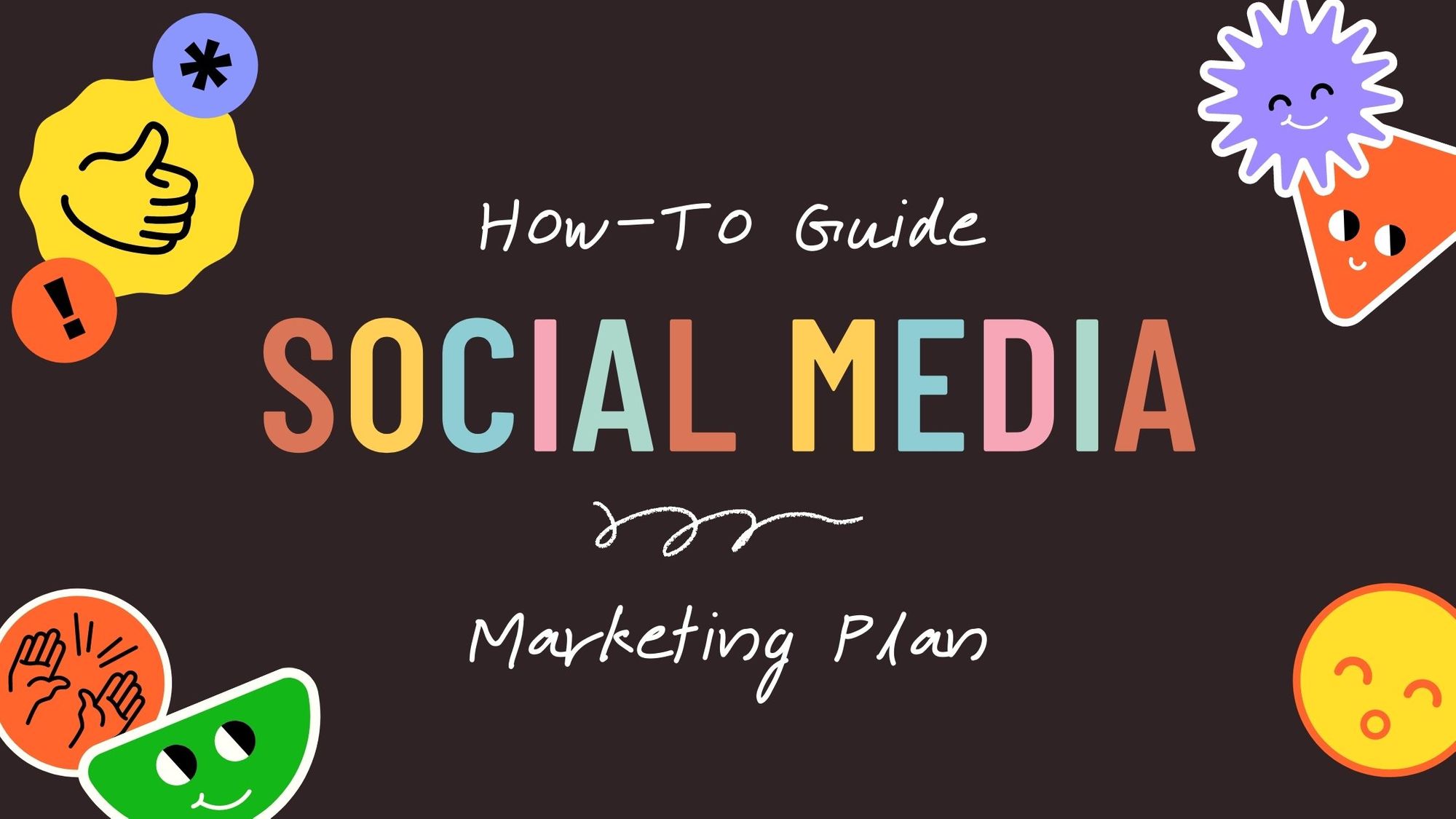Creating a social media marketing plan from scratch can seem overwhelming, and this feeling often makes business owners postpone constructing a much-needed strategy. Delaying the creation of a marketing plan only makes your business lose money and fall behind its competition.
Your goal is to design a strategy that increases brand awareness, boosts inbound traffic, improves search engine rankings, increases conversion rates, improves brand loyalty, and enhances customer satisfaction.
A well-thought-out social media marketing plan can help your business achieve its goals and maintain the reputation as a leader in your industry. Set your fears aside and follow the steps below to begin your own social media marketing plan. A carefully planned strategy can catapult your business to the top and help you reach out to your target audience.
There’s quite a bit I’ll cover in this post, so it might be best to create a social media marketing plan PDF of this info or print it out.
Review Your Current Social Media Platform Accounts
Begin the process by reviewing your current social media accounts. Visit each platform and make sure your profile is filled out completely. To build trust with followers, include a profile picture or company logo.
During the review take a look at your profiles and past posts.
- Are they engaging?
- Do they look professional?
If the answer is “no” to those questions, delete the posts and start fresh following the tips below.
And, it's more important than ever to keep your accounts up-to date. A great way for doing this is using social media engagement tool. It will help you engage users with their favorite networks and sources of information so they don't forget about all those cool posts or updates from your brand.
Discover Your Ideal Customer and Target Audience
Your target audience is the people your services and products are designed to benefit.
Depending on your specific brand, you need to determine the age range of your ideal audience and use this information to help you decide on which social media platforms are best suited to your needs.
So how do you determine this?
The answer to this question varies, depending on the business model you’ve chosen for your brand.
For example, if you are a B2B organization, your ideal customer may be an executive or manager at a company with substantial resources. These people would be able to afford your services and products, but they would also be the type of decision-makers who could set up an account with you.
But if you sell a B2C product, your ideal customer might be a mother or father who has young children and needs help. You might also consider using a tool like Facebook ads to determine where you should focus your resources.
Find the Right Social Media Platforms to Use
Are you starting your online marketing plan fresh? If so, it’s important to find the right social media platforms that are ideal for your business. Popular platforms to consider include Instagram, Snapchat, Pinterest, Twitter, Linkedin, and Facebook.
Figuring out which social media platforms work best for your business can be tricky.
No two businesses are alike, and the ones that are similar may have completely different objectives. For instance, a young fashion brand may want to focus on Instagram, while a financial institution may choose to use Facebook. Smaller businesses have a lot of options, but the larger your company, less social media platforms make sense for your business.

Here’s a brief breakdown of some of the more popular social media platforms.
- Instagram – Do you have products to sell? Instagram has 1.074 billion users and is geared towards a young demographic with most under the age of 35. You can post images and videos of your products along with a description that will catch the attention of users and drive them to make a purchase.
- Snapchat – This social network is geared towards users between the ages of 13 and 25. Teens, college students, and millennials enjoy using this platform for socializing and making purchases. According to Wishpond, up to 60% of college students have mentioned they feel confident making a purchase from a brand if they saw a coupon posted on Snapchat.
- Pinterest – This busy platform has 322 million users and is also known as a gem when it comes to selling products. The audience is mostly female and strives on professional-style images to capture the focus of users. Cosmetics, clothing, shoes, jewelry, makeup, and more can be found on this platform. While it’s mostly driven towards women, there are also some companies such as outdoor grills and men’s clothing that can be found on the site as well.
- Twitter – This social media platform has 9.52 million active users. You can get your discussions going and connect with followers on a personal level with this conversation-focused social platform. Reach out to millions of active users and create a dialogue that discusses your products and services.
- LinkedIn - This professional social media platform has 660 million users and is driven towards sharing information with others in your industry. It’s a great place to establish your business as an authority in your industry as well as stay up-to-date with your competitors.
- Facebook – This platform has more than 2.80 billion users worldwide and according to Oberloo.com, it has the most evenly-distributed demographics compared to any other social media platform.
Marketing your business on social media is a time-consuming and sometimes difficult task, but if you are strategic with how you spend your time, you can find the right social media platforms to use that’ll help you keep your business moving forward.
Create a Mission Statement
Your mission statement needs to represent your brand identity as well as clearly explain your intended use for social media marketing. You need to carefully think about your business's mission statement and make it unique.
Typically, a social media mission statement reveals why your business is on social media and what you hope to achieve while using the platform.
An excellent example of a mission statement is, “To inspire humanity – both in the air and on the ground.” – JetBlue Airlines
Your mission statement needs to represent your brand identity as well as clearly explain your intended use for social media marketing. Again, there are some great resources to help you craft an effective mission statement.
Design and Create Eye-Popping and Engaging Content
Does creating images and content for your social media accounts cause you to stress?
Not everyone is an artist but every business needs professional style content. The good news is you don’t need to be talented in creating art or design because the following social media tools will help non-designers create amazing images and graphics.
Here are a few options you can use to create social media images.
- Canva – This program guides you from start to finish. It features a design size guide, logo maker, colors, palette generator, color wheel, photo editor, font combinations, templates, custom image sizes, and a drag-and-drop interface.
- Pixlr - This beneficial site has AI-powered tools that help you create images for your social media accounts quickly. Features include smart tools driven by artificial intelligence, easy editing, borders, stickers, overlays, decorative texts, icons, and more. This tool is easy to master and produces fast results.
- Easelly – Infographics are often shared on social media about 3 times more than other visual images. They are often colorful, informative, and entertaining. This tool features access to professionally designed templates, illustrations, charts, icons, images, and more. It’s easy to use, walks you through the process, and produces professional-quality infographics.
Taking advantage of available social media image resources can really help your profiles stand out from the crowd. And if you have a huge library of images, it might make sense to leverage digital asset platforms to stay organized.
Use Social Media Management Tools to Manage Your Accounts
As a busy business owner, you might not have the time to personally review your social media platforms daily. The good news is there are social media management tools that do most of the work for you - plus evaluate, track, and analyze your social media accounts.
Social media management tools are highly beneficial because they have the ability to:
- Manage multiple social media accounts
- Alert you when a customer is contacting you
- Organize conversations to make your job easier
- Schedule posts ahead of time which saves you time in the long run
- Monitor keywords to help create new leads and pinpoint valuable information regarding your industry
- Offer access to analytical data
- Show key performance indicators (KPI) to help you see the bottom line
- Make the content curation process easier
They make consistency and uniformity simple.
You will soon realize that social media management tools will become your best friend when it comes to online marketing. The following tools will help you save time, manage your social media accounts and make improvements and changes when needed.
- Hootsuite – This tool manages Instagram, Facebook, Twitter, Pinterest, Linked In, and YouTube. It publishes, engages, monitors, advertises, and analyzes data on your social media accounts. It publishes content at the right moment when your followers are online to ensure your posts are seen.
- Buffer – Buffer monitors Instagram, Instagram stories, Facebook, Pinterest, and LinkedIn. This beneficial tool allows you to plan and schedule campaigns, measure your content performance, build your online community, and more. It features a stories planner, shop grid, hashtag planner, custom reports, Instagram tagging, and analytics.
- Loomly – This tool manages Twitter, Facebook, Instagram, TikTok, Pinterest, YouTube, and LinkedIn. It drives business success by offering access to features such as post ideas, a content library, optimization tools, mockups, and workflow. This tool allows you to schedule posts then sit back and relax while it goes to work for you.
Managing social media accounts can be a lot of work. Luckily, there are many tools like the ones mentioned above that can help you manage your accounts.
Involve Influencers in Your Strategy
Influencers have already established and developed credibility in an industry. They often have a large targeted audience and consistently attract newcomers. They provide helpful and trustworthy recommendations for specific products and services within their niche.
As a business owner, you can build an authentic relationship with influencers that have the same targeted audience as you. Many social media influencers are paid in the form of funds or free products. You need to connect with popular influencers in your industry to see if they are interested in promoting your brand. Be prepared to negotiate a contract for their services.
When choosing a social media influencer to represent your brand, you need to carefully review their profile and posts. This process is necessary to ensure they are the right person to represent your brand. Scroll through their posts carefully to make sure they aren’t representing your competitors, or have harsh language in their captions. The goal is to choose someone you would hire to be the face of your specific brand.
Create a Social Media Marketing Calendar
You don't want to run out of fresh ideas or run out of steam in the middle of your social media marketing campaign. To avoid that, you need a social media calendar to make sure that you stay organized and on track each week.
A social media content calendar is an extremely powerful strategy for both large organizations and small businesses. It provides you with a framework to plan your social media content, so you are always posting valuable, relevant content to your followers.
As a result, you'll have more consistent engagement and more opportunities to convert followers into customers.
If you're a business owner or marketing manager, a social media content calendar can help you to:
- Reduce social media marketing costs by making sure your team always has relevant and up-to-date content.
- Save time by creating a schedule for your social media team.
- Streamline the process of creating and scheduling content.
- Increase customer engagement and improve your brand image.
- Improve the results of your social media efforts
Strategizing and creating a social media marketing calendar is beneficial to your business and will save you time. Establishing a long-term customized plan allows you to set a foundation and make changes along the way.
Assess and Review What is Working or Not
It’s important to pay attention to analytics. However, sometimes trial and error is the best way to figure out what works for your business.
Looking at the data can tell you the story of whether your efforts are working or not. Sometimes it’s obvious while other situations might take longer to figure out.
Be sure to take note of posts that don’t get comments, likes, or shares. This means your audience scrolled over the information or didn’t find it entertaining, informational, or interesting enough to bother liking it or sharing it with friends.
Make tweaks based on what the data says, and continue to revise and refine to maximize your social media efforts.
Create Your Social Media Marketing Plan
Creating a social media marketing strategy is easier than you think when you follow the information mentioned above. It’s important to look at your business with fresh eyes and create a plan that captures the attention of your targeted audience.
If you have difficulty relating to your audience, it's a good idea to create a team of employees that can offer ideas and suggestions for relatable content.
Always take advantage of the many beneficial tools that help you create amazing content and images. These tools help you consistently produce professional-quality posts that make followers and potential new customers trust your brand. Remember, to make each post colorful, interesting, engaging, and entertaining.
You can save a lot of time in your work schedule when you use social media managing tools. These tools boost your confidence when it comes to social media marketing, give you insight into how your posts are doing, allow you to schedule posts to go live on platforms at the right time, and help you continuously grow your presence on your platforms.
Whether your business is big or small, you need to create a trustworthy and reputable social media presence that sets you above your competition.
Interact with your followers, post engaging content, and build relationships that will lead to long-lasting, devoted customers. As a result, you will be able to grow your business through your social media accounts which will ultimately produce new leads and customers.
Guest post by Chris Makara, a digital marketer with a focus on SEO, Social Media, Automation and Analytics. He is the founder of Bulkly, a social media automation tool for individuals and small businesses.


